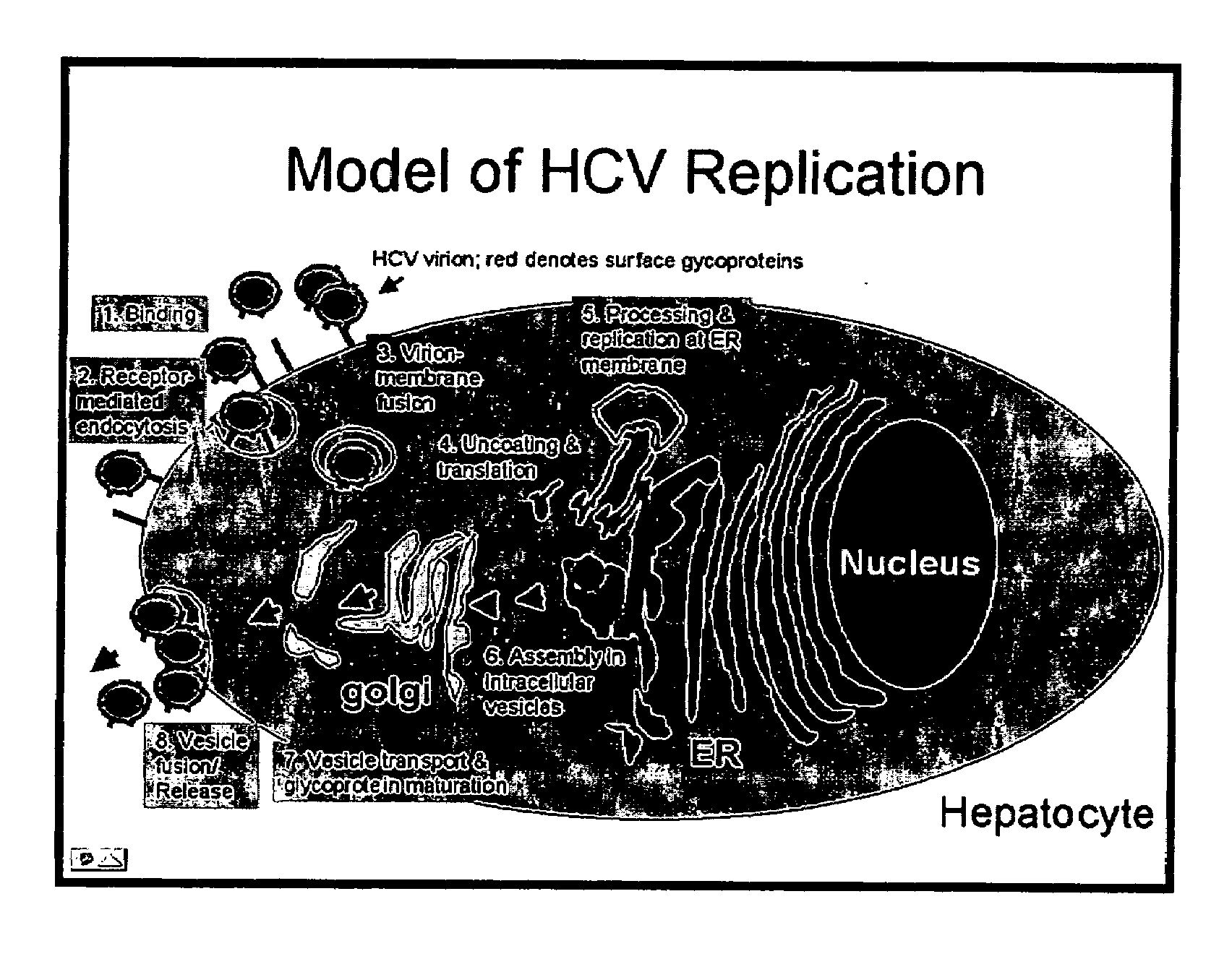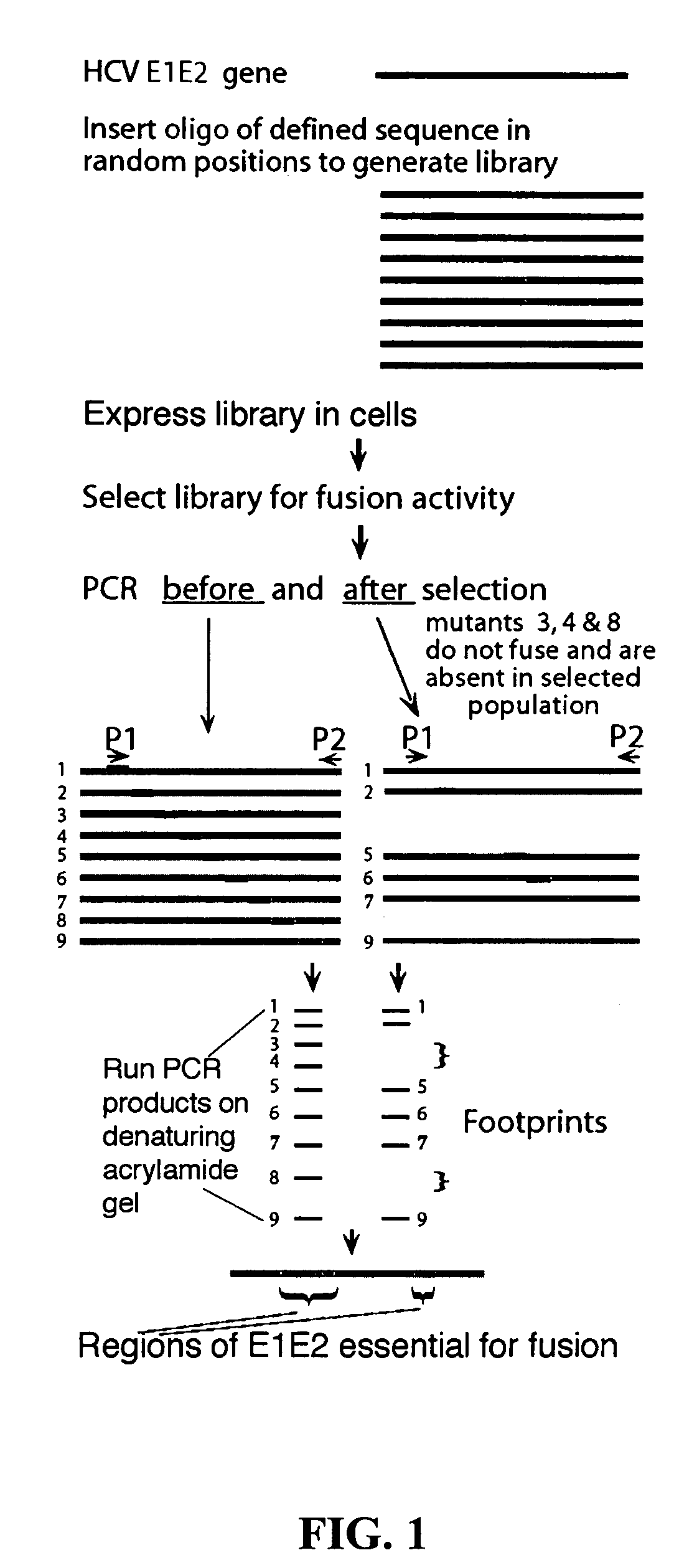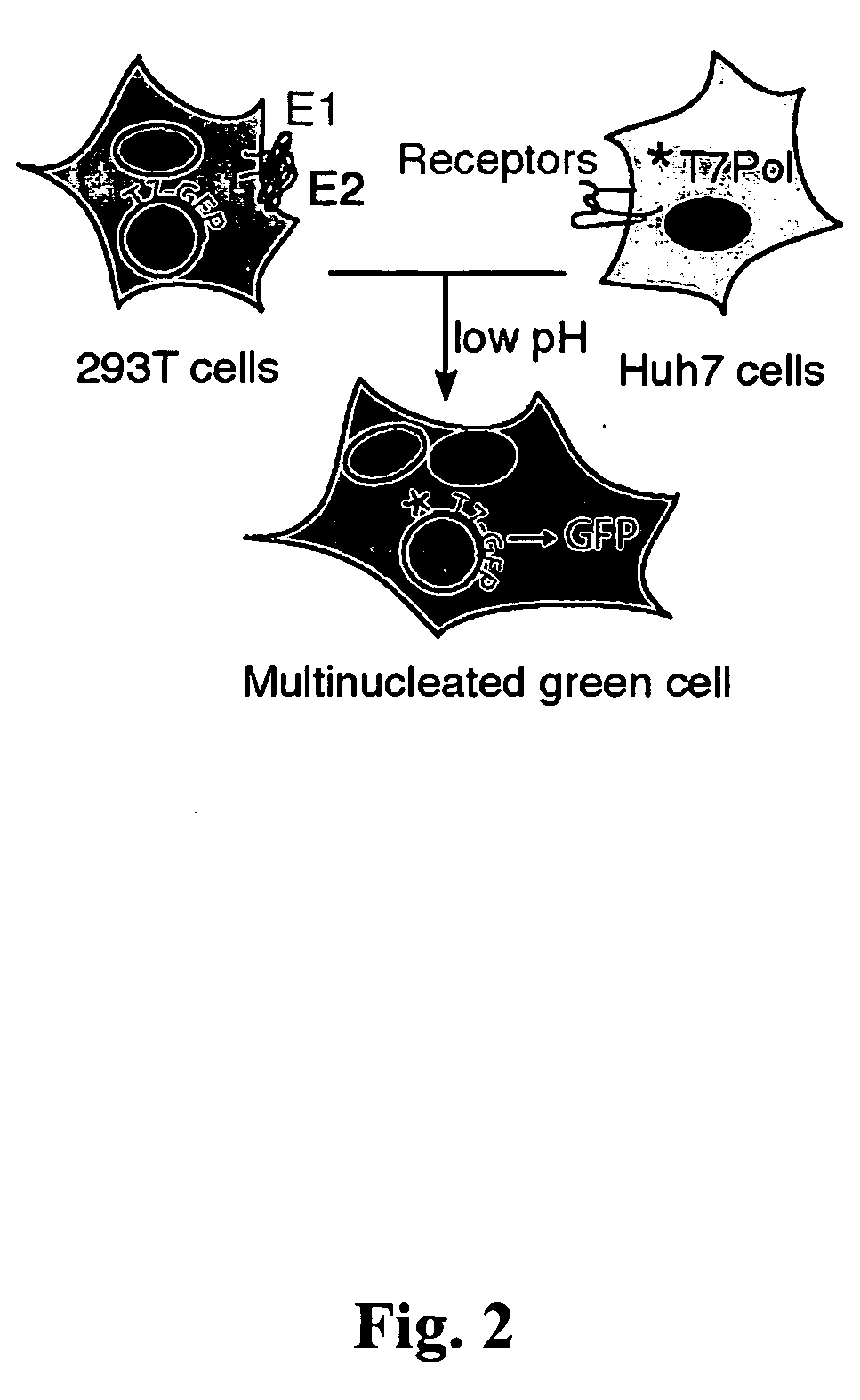Methods for the production of HCV, assaying HCV entry, and screening drugs and cellular receptors for HCV
- Summary
- Abstract
- Description
- Claims
- Application Information
AI Technical Summary
Benefits of technology
Problems solved by technology
Method used
Image
Examples
example 1
HCV Fusion Assay and Applications Thereof
[0141]The present invention provides a cell-cell fusion assay with two cell-types, where the assay depends on the presence of functional HCV envelope proteins on the surface of one cell-type (“effector cell”) and the presence of putative HCV receptors on the other (“target cell”). The result of fusion is more robust and reliable when the assay is conducted at lower-temperatures. For example, if incubation between an effector cell and the target cell is conducted at 37° C., then there are only background levels of fusion. But if incubation between an effector cell and the target cell is conducted at lower temperatures, for example, at about 28° C. or at about 30° C., then robust and reproducible fusion is observed.
[0142]This cell-cell fusion assay can be used to test many of the mutants that have been generated as described in Example 1. In one embodiment, mutants that prevent fusion prevent reporter gene expression, yet the mutants do express...
example 2
Fusion Assay Using Pseudotyped Particles
[0162]Pseudotyped particles that contain a retroviral core and HCV envelope glycoproteins ((Hsu et al., Proc. Natl. Acad. Sci. USA, 100(12):7271-6, 2003) (Bartosch et al., J. Exp. Med., 197(5):633-42, 2003) (Flint et al., J. Virol., 78(13):6875-82, 2004) (Lavillette et al., Hepatology, 41(2):265-274, 2005)) have been reported. Transduction with these pseudotyped viruses is dependent on the presence of functional HCV envelope proteins (see FIG. 4). 293T cells were co-transfected with an expression plasmid for HCV E1E2, a plasmid for expressing retroviral Gag and Pol proteins and a plasmid containing the retroviral packaging sequence as well as the fluorescent marker dsRed (plasmid for HCV E1E2 was pcDNA-HE1E2 (Flint et al., J. Virol., 78(13):6875-82, 2004)), (plasmid for Gag and Pol was pCMVDR8.91 (Zufferey et al., Nat. Biotechnol., 15(9):871-5, 1997)), and pCSRW (plasmid for packaging sequence and dsRed (Demaison et al., Hum. Gene Ther., 13(7)...
example 3
Generation of Large and Extensive Libraries of Mutations is Possible in HCV E1 and E2
[0165]Transposon-derived libraries of mutations were made in the chimeric HCV E1-G and HCV E2-G constructs in order to optimize their fusion potential. Chimeric E1-G protein contained the ectodomain of HCV E1 and the signal sequence, transmembrane domain and cytoplasmic tail of the VSV G protein (Takikawa et al., 2000) and chimeric E2 protein, (same as chimeric E1-G, but with E2). Although fusion with these chimeric constructs were not robust enough to be practical for use in the study of mutants, useful information was obtained regarding: (a) size of transposon-derived libraries, and (b) folding of mutant proteins with insertions of five amino acids at random positions along the protein. Specifically, data was obtained that indicates that (a) transposon-derived libraries can be used to generate comprehensive libraries of mutations for any particular HCV protein, including full-length HCV E1 and E2 ...
PUM
| Property | Measurement | Unit |
|---|---|---|
| Temperature | aaaaa | aaaaa |
| Temperature | aaaaa | aaaaa |
| Temperature | aaaaa | aaaaa |
Abstract
Description
Claims
Application Information
 Login to View More
Login to View More - R&D
- Intellectual Property
- Life Sciences
- Materials
- Tech Scout
- Unparalleled Data Quality
- Higher Quality Content
- 60% Fewer Hallucinations
Browse by: Latest US Patents, China's latest patents, Technical Efficacy Thesaurus, Application Domain, Technology Topic, Popular Technical Reports.
© 2025 PatSnap. All rights reserved.Legal|Privacy policy|Modern Slavery Act Transparency Statement|Sitemap|About US| Contact US: help@patsnap.com



